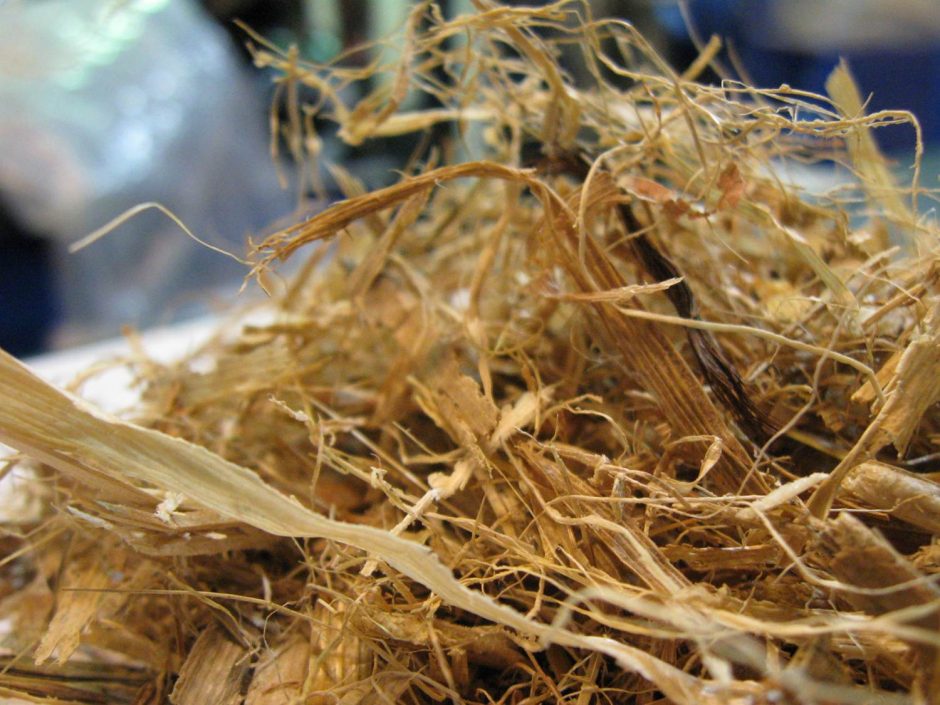Biorefining
Biorefining is the process that uses the enzyme-mediated approach to break down the carbohydrate components of lignocellulose (i.e., cellulose and hemicellulose) into monomeric sugars for downstream fermentation into biofuels. The typical biorefining process consists of pretreatment, enzymatic hydrolysis and fermentation. Our FPB/B group also works on policy aspects, such as BC’s Low Carbon Fuels Standard (LCFS), that helps bridge the price gap between fossil and renewable fuels as well as assessing the overall sustainability of processes using Life Cycle Analysis (LCA) models such a GHGenius.

Pretreatment
Pretreatment is a prerequisite for disintegrating the complex nature of lignocellulose to a substrate, which is comparatively more accessible to enzymes/microbes for subsequent bioconversion processes. Previously we had been focusing on two major pretreatment processes: steam pretreatment and Organosolv pretreatment. These two pretreatment processes are recognized as the potential pretreatment processes for the production of bioethanol due to its numerous technical, economic and environmental advantages. The steam pretreatment process consists of subjecting the feedstock to high-pressure steam at temperatures normally in the range of 170-240ºC for retention times ranging from a few seconds to a few minutes concluding with a final pressure release that facilitates the disintegration of the feedstock. Organosolv pretreatment uses an organic solvent at high temperature and pressure to disintegrate the structure of lignocellulose. This treatment essentially leads to the partial removal of lignin and hemicellulose thereby increasing the enzyme accessibility to the substrate.
To try to take advantage of the existing infrastructure, our current research also looks at adapting a thermomechanical pulping (TMP) process as a potential pretreatment method. TMP process is a variation of steam pretreatment, where pressurized steam is employed to soften the lignin and enhance the swelling of fibres, either before or during the mechanical pulping process. With the development of electronic communication, thermomechanical pulping has lost its traditional newsprint market. As this has resulted in the closure or less frequent operation of many commercial plants, these facilities could be repurposed as potential biorefineries.
In pretreatment research, our goal continues to develop and optimize the pretreatment processes which lead to maximum biofuel production with least chemical and enzyme inputs. We are in the process of elucidating various factors, which affect the efficiency of the pretreatment. We also continue our efforts in examining the physical and chemical reaction changes occurring during pretreatment and their consequent effect on enzyme hydrolysis and fermentation.
Enzyme Hydrolysis
Enzymatic hydrolysis process converts pre-treated substrate to monomeric sugars, which could be further converted to biofuels or other value-added chemicals. An ideal enzymatic hydrolysis process is expected to yield maximum conversion of substrate to sugars at high consistency within a reasonable time with the least enzymatic input. We investigate various enzyme and substrate related factors affecting the efficiency of hydrolysis including the effect of substrate accessibility, cellulose crystallinity, substrate consistency, effect of hemicellulose and lignin removal, lignin-enzyme interactions, and the effect of degree of synergy between various enzyme components in the cellulase enzyme mixture.
Fermentation
Fermentation uses various yeast strains, such as brewer’s yeast (Saccharomyces cerevisiae) and oleaginous yeasts to convert the monomeric sugars produced from pretreatment and enzymatic hydrolysis to biofuels, including bioethanol that could be blended into gasoline and lipids that could be upgraded into “drop-in” biofuels. However, the hydrolysate generally contains toxic products which could potentially suppress the fermentation process and lower the final yield. We examine the major inhibitory compounds present in the hydrolysate and different detoxification mechanisms to achieve efficient fermentation for maximum yield of biofuels.
Some of our partners in the Bioeconomy/Biorefinery are:
- Novozymes
- NSERC
- Forintek
- Weyerhaeuser Canada
- NRCAN
- Genome BC
- TEMBEC
- Parkland
- Boeing
- Port of Vancouver
- Sea Span
- Air Canada, and many others